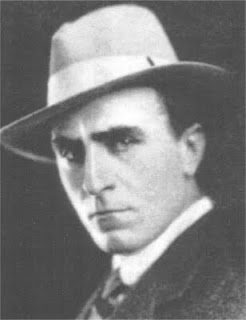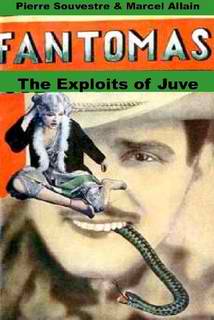
 We already noted in our last installment that Arthur Henry Ward had adopted the pseudonym of Sax Rohmer for his relatively successful career as a music hall songwriter and comedy sketch writer. He would later claim that he worked as a newspaper reporter during these years, but that his articles were published anonymously. Allegedly he covered waterfront crime in Limehouse, but he also claimed to have successfully managed interviews with heads of state. There is little doubt the man was a great raconteur, but none of the anonymously published articles and interviews Rohmer credits himself with writing have ever been located by researchers. It is highly questionable whether he ever actually worked as a journalist or at least to the extent he claimed. What is factual is that he did begin having works published anonymously.
We already noted in our last installment that Arthur Henry Ward had adopted the pseudonym of Sax Rohmer for his relatively successful career as a music hall songwriter and comedy sketch writer. He would later claim that he worked as a newspaper reporter during these years, but that his articles were published anonymously. Allegedly he covered waterfront crime in Limehouse, but he also claimed to have successfully managed interviews with heads of state. There is little doubt the man was a great raconteur, but none of the anonymously published articles and interviews Rohmer credits himself with writing have ever been located by researchers. It is highly questionable whether he ever actually worked as a journalist or at least to the extent he claimed. What is factual is that he did begin having works published anonymously.
As a young man, he ran with a crowd of self-styled bohemians who occupied a clubhouse on Oakmead Road in London. Each member of the gang was known by rather fanciful nicknames with Rohmer being known as Digger. Their activities ran from simply hanging around the clubhouse to picking up girls and attempting various get-rich-quick schemes to avoid making an honest living. Some of their schemes were of questionable legality.
Around this time, Rohmer decided he would fictionalize their exploits. It is believed he authored seven stories about the Oakmead Road Gang. Five manuscripts were known to have survived their author’s death: “Narky,” “Rupert,” “Digger’s Aunt,” “The Pot Hunters,” and “The Treasure Chest.” All seven stories were submitted for anonymous publication to Yes and No. It appears only the first of the group of stories ever saw print. The surviving four manuscripts passed upon the death of Rohmer’s widow to Cay Van Ash. When Van Ash died in Paris twenty years ago, Rohmer’s unpublished manuscripts were being held by a friend in Tokyo (where Van Ash lived for many years while teaching at Waseda University). When the friend had his visa rescinded on short notice in 2000, he was forced to leave his belongings behind, where they were junked by a Japanese family who thought the storage boxes contained worthless garbage.
…
Read More Read More








